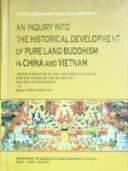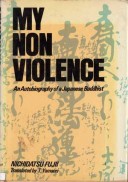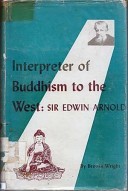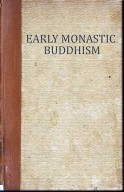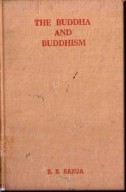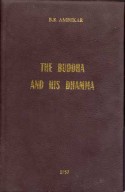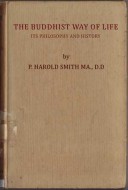Tìm Sách
Sách tiếng Anh-English >> An Inquiry Into The Historical Development of Pure Land Buddhism in China and Vietnam
Thông tin tra cứu
- Tên sách : An Inquiry Into The Historical Development of Pure Land Buddhism in China and Vietnam
- Tác giả : Thích, Thiện Mỹ (Trịnh Ngọc Bách)
- Dịch giả :
- Ngôn ngữ : Anh
- Số trang : 305
- Nhà xuất bản : Department of Buddhist studies university of Delhi
- Năm xuất bản : 2010
- Phân loại : Sách tiếng Anh-English
- MCB : 12100000011556
- OPAC :
- Tóm tắt :
<div ;"="">
General introduction
Of the various forms of Buddhism that developed after the demise of the historical Buddha in about 480 B.C., Mahayana (the “Great vehicle”) became the dominant tradition in East and parts of Southeast Asia. This broad area encompasses China, Vietnam Korea to Japan, and other countries as well.
Year after year, a number of Mahayana Buddhist Schools arose in accordance with the capacities and circumstances of the people in society. The dominant ones include the Zen, Pure Land and Esoteric. Schools, among them, Pure Land has been the most popular with the greatest number of adherents.
CONTENTS
Certificate
Acknowledgement
Abbreviations
Contents
Chapter one: INTRODUCTION
1. General introduction
WHAT IS PURE LAND?
WHAT DOES IT MEAN OF AMITABHA?
WHAT DO BUDDHISTS BELIEVE IN?
2. Scope of the topic
Chapter two: THE HISTORICAL SURVEY OF PURE LAND LITERATURE AND ORIGIN OF AMITABHA BUDDHA
I. THE HISTORICAL ORIGIN OF BUDDHISM CLASSICAL SANSKRIT
(1) Historical Origin of Buddhism in the Chronology of Indian Literature
(2) A Few dated events
(3) Extra-Indian helps
(4) Indian’s Sense of History
(5) Origin of Pure Land in Buddhist Hybrid Sanskrit
(6) Pure Land in Indian Buddhism
II. HISTORY OF PURE LAND IN THE ORIGIN OF MAHAYANA BUDDHISM
(1) Origin of Mahayana Buddhism
(2) The Terms Sahajayana and Kathinayana
III. HISTORY OF PURE LAND IN CHINESE BUDDHISM
History of Pure Land according to Kuan Wu Liang Shou-Fo Ching (AmitSyur-Dhyana-Sutra)
Chapter three: MAIN TEACHINGS OF PURE LAND
OBJECTS OF FAITH [SRADDHA]
A. BELIEVE IN BUDDHAS
I. Belief in Sikyamuni Buddha
II. Believe in Amitabha Buddha
B. FAITH IN DHARMA
I. Believe in the Teaching of Sages
II. Believe in the Smaller Sukhavativyuha Sutra
C. BELIEVE IN SANGHA
Believe in Kumirajiva Bodhisatlva
VOW [PRANIDHANA]
I. Samantabhadra’s Vows
II. Ksitigarbha Bodhisattva’s Vows
III. Dharmakara’s Vows
PRACTICE [PATIPATTI]
I. Buddha Recitation Methods
Four methods of Buddha Recitation
a. Real Mark [self-nature] Buddha Recitation
b. Contemplation by thought Buddha Recitation
c. Contemplation of an image Buddha Recitation
d. Holding the name Buddha Recitation
II. Practice Other Power and Self Powers
1. Yung-Ming’s Ch’an – Pure Land Syncretism
2. “Other Power” versus “Self-power”
3. Nien-fo versus Meditations
4. The Evaluation of Ch’an – Pure land Syncretism
III. Practice Ideas of Transfer of Ment
Chapter four: SÄKYAMUNI BUDDHA TAUGHT ABOUT PURE LAND IN CHINESE TRIPITAKA
1. PURE LAND IN AVATAMSAKA SÜTRA
2. PURE LAND IN MAHARATNAKUTA SÜTRA
3. PURE LAND IN KARUNAPUNDARIKA SUTRA
4. PURE LAND IN SADDHARMAPUNPARIKA SUTRA
5. PURE LAND IN SURANGAMA SUTRA
Chapter five: ESTABLISHMENT OF PURE LAND SCHOOL IN CHINA AND VIETNAM
INDIA
1) Asvaghosa
2) Nägärjuna [150-250 A.D]
3) Vasubandhu [320-400 A.D]
CHINA
1) Hui-Yuan
2) Shan-Tao
3) The third patriarch Cheng-Yuan
4) The fourth patriarch Fa-Zhao
5) The fifth patriarch Shao-K’ang
6) The sixth patriarch Yung-ming-Yen-shou
7) The seventh patriarch Huai-kan [Jing-ch’ang]
8) The eighth patriarch Zhu-hung
9) The ninth patriarch Ou – I, Chih – hsu
10) Patriarch: Xing-Ce
11) The eleventh patriarch Shi – xian
12) The Twelfth patriarch Ji – Jing
13) The thirteenth patriarch Yin-kuang
VIỆT NAM
1) VINITẢUCI (?-594)
2) THẢO ĐƯỜNG
3) TỊNH LỰC (1112-1175)
Chapter six: PURE LAND MASTER AND THEIR CONTRIBUTION
A. MORAL LIFE
B. SOCIETY
C. ARTS AND LITERATURE
I. ARTS
II. PURE LAND LITERATURE
a. Sutras
b. Vinaya
c. Sastra
Chapter seven: PROOFS OF REBIRTH IN PURE LAND
I. PROOFS DURING ONE’S LIFETIME
II. PROOFS AFTER DEATH
Chapter eight: CONCLUTION
Glossary
Bibliography
 Facebook
Facebook
 Google
Google
 Google+
Google+
